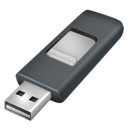Hi, I have done my first build today (so I apologise if this is a stupid question  ) and all of the parts are new apart from the PSU and SSD (which I bought and put into my old desktop). When I try to install windows, using a USB, onto the SSD I get an error saying windows cannot be installed on that disk as it has an MBR partition table and it needs to be a GPT disk.
) and all of the parts are new apart from the PSU and SSD (which I bought and put into my old desktop). When I try to install windows, using a USB, onto the SSD I get an error saying windows cannot be installed on that disk as it has an MBR partition table and it needs to be a GPT disk.
I don't mind deleting everything that's on the SSD as I have backed up the drives for my SSD and wireless adapter, and all the important documents. So is there a way to clean the SSD in the Windows setup and install Windows 10 on it after that with everything working fine?
Thank you for any help!
I don't mind deleting everything that's on the SSD as I have backed up the drives for my SSD and wireless adapter, and all the important documents. So is there a way to clean the SSD in the Windows setup and install Windows 10 on it after that with everything working fine?
Thank you for any help!



